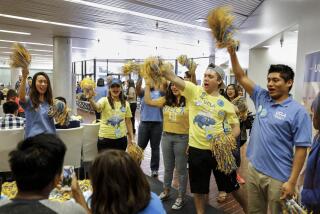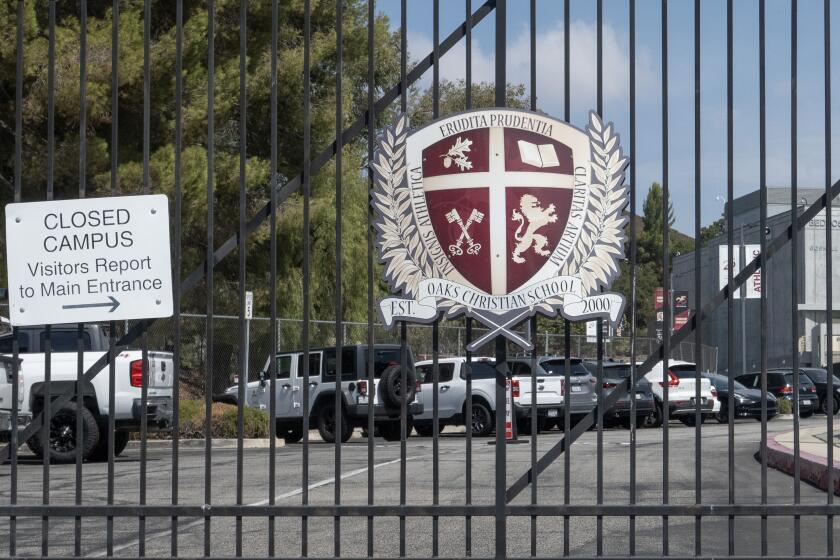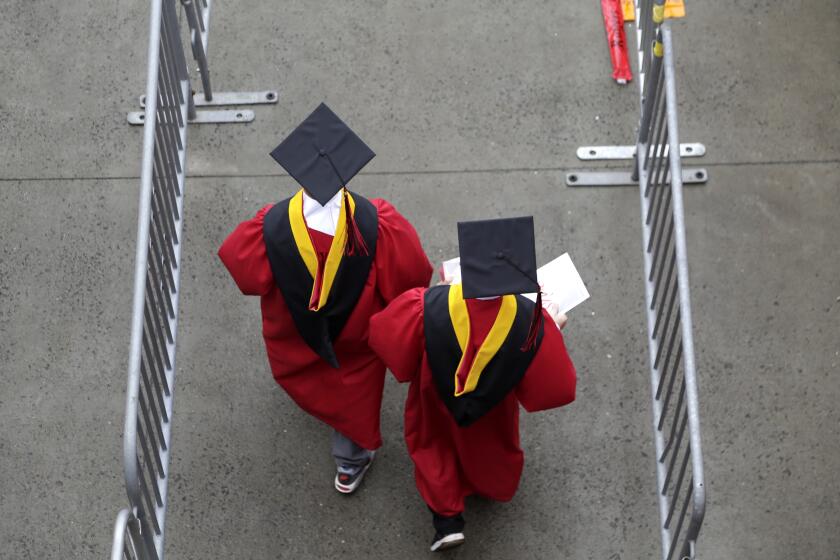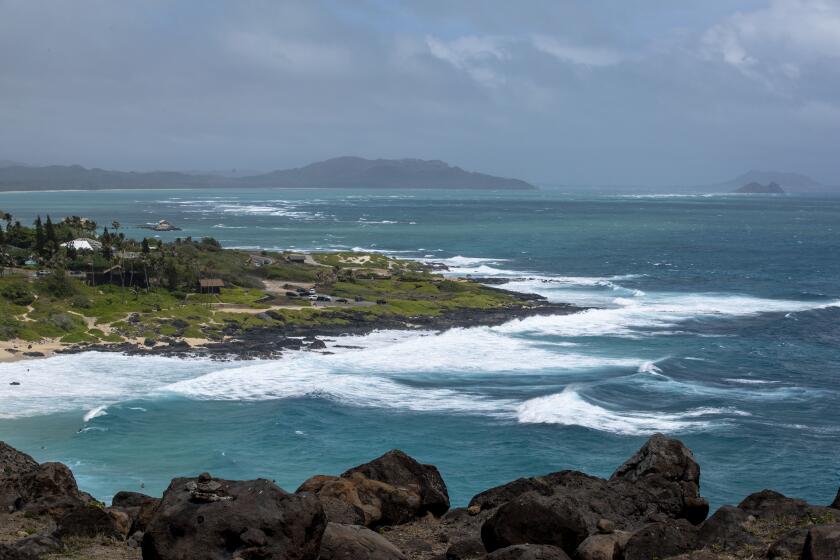SDSU Is Not Eligible for Windfall of State Funds : Education: Student demand, dampened by class and teacher cuts, has dropped so low that restored classes wouldn’t be filled.
Steep declines in student enrollment have made San Diego State University the only campus in the California State University system not eligible for additional instructional funds that system Chancellor Barry Munitz released Thursday to 18 other sites.
At the same time, Munitz told The Times that he is “paying very, very cautious attention” to the continuing budget turmoil at SDSU over the planned firing by President Thomas Day of almost 150 professors, which has contributed to the enrollment drop.
Munitz announced at a news conference Thursday that an extra $15.4 million would be available to those campuses where cuts in course offerings now mean there is more student demand for classes than classes available. The money will be used to restore up to 3,500 classes this fall and attract the equivalent of 20,000 additional full-time students.
But at SDSU, student demand has dropped--due not only to actual and planned cuts but also to the negative publicity over the way Day made them--to the point where additional class offerings would not mean more students for the fall semester.
As a result, SDSU did not meet the requirements Munitz set down in freeing up the $15.4 million, based on his latest assumptions about how much the Legislature will cut the CSU system. (Cal State San Marcos was not eligible because, as a new campus, it was never required to make budget cuts and eliminate classes for this fall.)
“We couldn’t argue that we were likely to produce additional students if we had more money,” said Ronald Hopkins, vice president for academic affairs at SDSU. Rather, new class sections on campus would give more choices to those students who already plan to begin studies Aug. 28 despite the cuts already made, he said.
San Diego State--the largest CSU campus--now plans for no more than the equivalent of 22,000 students this fall, more than a 12% drop from the 24,300 last fall.
A top campus administrator, who asked not to be named, said that “as part of (Day’s) aggressive planning for what he thought would be a catastrophic budget situation, he reduced everything to the point where we got lots of bad publicity and we are now way below where we would otherwise be.”
Day announced in May that he would fire 146 tenured and tenure-track professors and 50 temporary instructors in eliminating nine academic departments and severely reducing nine others. He believes that such “deep and narrow” cuts would leave most of the university unscathed by the need to reduce the budget 8% as ordered by Munitz for all campuses.
But the result has been a continuing uproar at SDSU. The faculty believes Day did not adequately talk with them before making the cuts and failed to consider alternatives to wholesale firings of tenured professors and the end to departments such as anthropology, Russian-German and aerospace engineering.
Earlier this week, Day agreed to postpone for one semester all the tenured and tenure-track layoffs by using more than $5 million in money normally reserved for materials, supplies, travel and library books. That restored some 600 additional classes for the fall, which gives those students already enrolled more choices, Hopkins said.
But Day’s move has done little to turn the campus mood around. The Academic Senate already voted “no confidence” in Day in June, and the American Assn. of University Professors has announced an investigation of the campus.
Munitz said the turmoil “of course gives me pause. . . . What I want to make sure of is that the process at San Diego State has been healthy and sound, and I have been watching all the correspondence from a whole bunch of people who obviously don’t feel that it has been.”
Munitz said there is no need yet for him to take “precipitous action” regarding SDSU.
“I now have complete confidence in Tom Day, but I need to talk to other people on campus, to colleagues who have been here a lot longer than I have, to the Academic Senate, to the trustees, to gather information,” Munitz said.
“Sometimes in academic institutions, the process can overwhelm the substance, so we will be watching this very, very carefully . . . but the chairman of the board of trustees has expressed confidence in all 20 of the campus presidents.”
Munitz said several recent actions in Sacramento encouraged him to make the extra money available. First, the Legislature’s conference committee has agreed on a 6.5% cut, or $109 million, in the CSU basic budget, a trim that hurts but is not devastating. Both the governor and the Legislature now support the 40% student fee hike that Munitz says is necessary to avoid budget catastrophe. In addition, there is now an early retirement incentive for CSU faculty that will save money and lessen the need for layoffs.
Nevertheless, if state funds wind up to be less than expected--the governor still proposes a 10% cut--students and teachers will face “nightmarish” class cuts next spring to make up the difference, Munitz warned.
“It makes me extraordinarily apprehensive about the spring,” he said.
Munitz denied that he is using the class restorations as a pressure tactic on the governor and Legislature, which remain deadlocked a month and a half after a budget was supposed to be completed. With students now registering for the fall session, the chancellor said he can no longer delay decisions about course offerings.
“My major concern is not the public perception but meeting the student demand for this fall,” Munitz said.
Patrick Nichelson, president of the systemwide faculty union, said he strongly supports Munitz’s move Thursday as educationally sound and politically shrewd.
But Tom Hayden, the Santa Monica Democrat who is chairman of the Assembly’s Higher Education Committee, noted that about 10,000 CSU course sections were dropped in 1991-92 and that 1,300 more will be cut this fall, even with Thursday’s restorations.
“For the average CSU students, it’s still a net loss,” Hayden said. But he described Munitz’s action as “good leadership” in bargaining with the Legislature and governor to obtain the fee increase and early retirement plan.
In Southern California, the classes to be restored number 74 at Bakersfield, 28 at Dominguez Hills, 133 at Fullerton, 170 at Long Beach, 146 at Los Angeles, 100 at Northridge, 131 at Pomona and 169 at San Bernardino.
More to Read
Sign up for Essential California
The most important California stories and recommendations in your inbox every morning.
You may occasionally receive promotional content from the Los Angeles Times.











